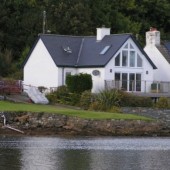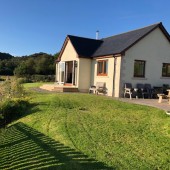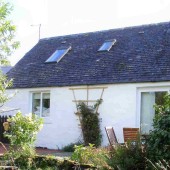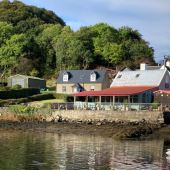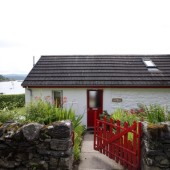 Geologically we live mostly on Dalriadan quartzite with epidiorite and hornblende schists, and some bands of limestone and black slate. We are on a fault that runs north east and south west, down which earth tremors sometimes occur. Two were recorded in January 1927 and one in 1936. Others have been felt by inhabitants at later dates, one during the war and one in 1949. The soil is very acid and is largely peat, though less so where the limestone shows itself. This is mostly on Danna where there was at one time a limekiln, the stone being worked and lime burnt there mostly for sale in the Western Isles. On this island is some very interesting flora. The following plants have been found and noted here and in nearby places and are considered unusual if not rare.
Geologically we live mostly on Dalriadan quartzite with epidiorite and hornblende schists, and some bands of limestone and black slate. We are on a fault that runs north east and south west, down which earth tremors sometimes occur. Two were recorded in January 1927 and one in 1936. Others have been felt by inhabitants at later dates, one during the war and one in 1949. The soil is very acid and is largely peat, though less so where the limestone shows itself. This is mostly on Danna where there was at one time a limekiln, the stone being worked and lime burnt there mostly for sale in the Western Isles. On this island is some very interesting flora. The following plants have been found and noted here and in nearby places and are considered unusual if not rare.
Ferns - Osmunda Regale; A dwarf form of Adder’s Tongue which is very rare; Buckler fern.
Mosses - Pottia Heimii, Tortula Intermedia, Barbula reflexa and Gymnostoma Colcoreum.
Flowers, etc. - Narrow Helleborine. Water Whorlgrass. Frog Orchid. Some rare Fescues. Wood Millet. Eelgrass. Climbing Corydalis. Scarlet Pimpernel (a rare weed in our acid soil). Some rare Eyebrights. A rare Cranesbill. Field Gentian. Elecampane. Cranberry, which is found on much of the higher ground and also on Taynish Island. A rare Veronica Agrestis. Bulbous Buttercup. Some unusual Bladderworts. Wall Pennywort. There are also some primitive stoneworts, and Bullrush is found in marshy places. An unusual Pondweed is to be seen in Taynish Loch, and it is thought that other rare aquatic plants may well be present. There is an interesting Bur Marigold near Danna na Cloiche, which is probably a relic of cultivation. All these are in addition to the abundance of commoner flowers to be found all over the district, of which we may perhaps name the Grass of Parnassus, Bog Asphodel, and many different sweet smelling Orchis, which delight through the summer months. We have a real wealth, and can discover plants from every sort of geography, those of mountain, woodland, pasture, pond, bog, and seashore. Is this perhaps because we have not yet used chemical sprays in such quantities as to denude the countryside of its flora and fauna, as has too often happened elsewhere?
Our fauna shows nothing very specially unusual among the fourfooted species. As in many other parts of the country, foxes have decreased since the advent of myxamatosis, but as rabbits seem to be on the increase once more, one wonders if we shall soon have more foxes too. There are certainly more badgers than there were twenty years ago. Roe deer abound, to the detriment of our gardens, and while we may be charmed with the engaging looks of these animals we could wish their number were fewer. Jap deer appeared some years ago having been introduced to Achnamara and found their way over here. Red deer were not known until the first world war, when in the hard winter of 1917 they crossed the Crinan Canal in search of food, and have been with us ever since. We have a few real wild cats, besides the usual tame cats gone wild, and some stoats and weasels, with the commoner small rodents. There are plenty of seals in the waters around our shores; beautiful and beguiling they are, but unpopular with the fishermen as anyone who has to mend a net torn and tangled by these animals will know. An observer tells us that she has seen as many as six seals at one time basking on a rock in Caol Scotnish, and larger numbers have been observed on Carsaig Island.
An observer of birds writes that though this district is not noted for any particular species, one or two are of real interest. The Hen Harrier is one of these. Of recent years it has had pretty well its only British stronghold as a nesting species in Orkney and a very few of the Outer Hebrides, but since 1939 it has bred fairly freely here, and though it is now spreading a very little elsewhere it can still be counted a Knapdale bird. We still have the Corncrake, very rare now everywhere else in Scotland and probably extinct in England, and the Black Throated Diver which is a nester only in the Orkneys and West Highlands, and occasionally in North Perthshire.
Choughs, though they do not breed here, have been occasionally seen; Waxwings come now and then when the weather is very hard on the East Coast. As with the flora we have a great variety of types of birds from the large predatory hawks—even Golden Eagles have been noted near Ardnachaig—to the tiny Goldcrest. Birds of hilltop, woods, field, hedge, shore, and seabirds of all kinds may be found here, and perhaps the same reasons apply here as do with the flowers.
Game birds on the other hand have shown a distinct decrease. In the Taynish game book, which covers most of the ground south of Tayvallich, we see that the number of snipe and woodcock killed in a season about the turn of the century often ran into hundreds. The numbers of woodcock varied more than those of snipe, and this would be accounted for by the variation in the cold of the winters. Grouse, red and black, were shot in fair but not in large quantities before the second world war, and 60 or 70 years ago there were a great many partridges. Now the red grouse has pretty well disappeared though an occasional black grouse has been seen fairly recently. With better farm drainage and cultivation the number of snipe are much less, and as a result of having less arable ground partridges are non—existent. Pheasants were few in the old days, but in the early 1930’s the Taynish proprietor reared a considerable number, and though these were reduced during the war years, they are now again on the increase, and more are killed in a season that in, say, 1910.
Capercailzie have never been one of our game birds, but one wonders whether they may appear as a result of the changing face of the countryside due to afforestation. Our landscape now looks so much more like that of Invernessshire where they abound. Our President writes: ‘It is very interesting to watch the terns from the small island in the bay coming down to wash and splash in the burn beside one of the Kentallen cottages, they keep themselves busy all day long.’



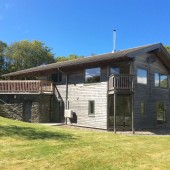
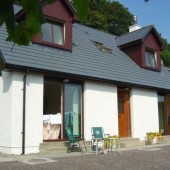
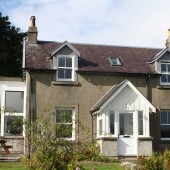
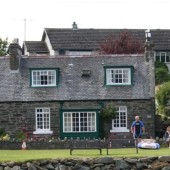
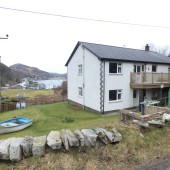
_baef36edc53bdd009ca06069d3b23fda.jpg)
